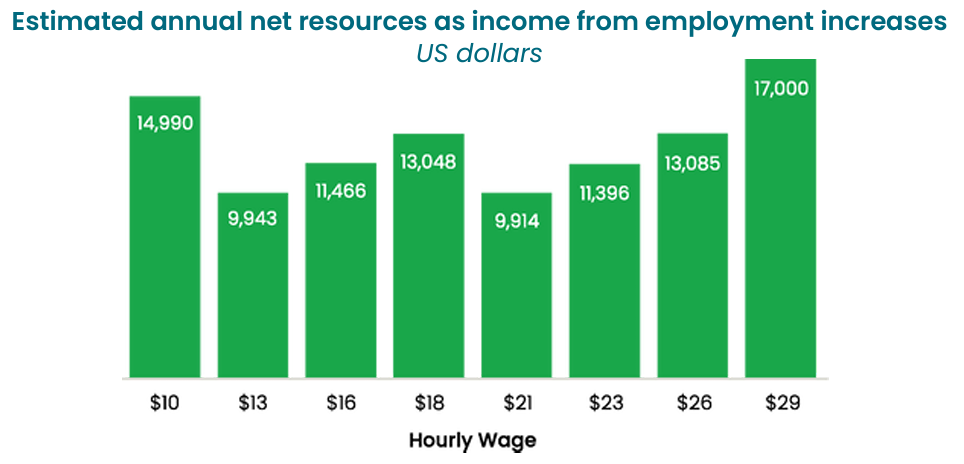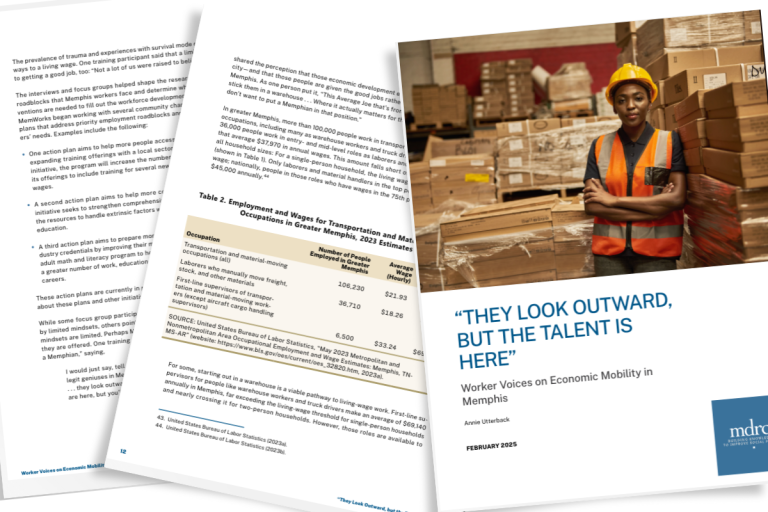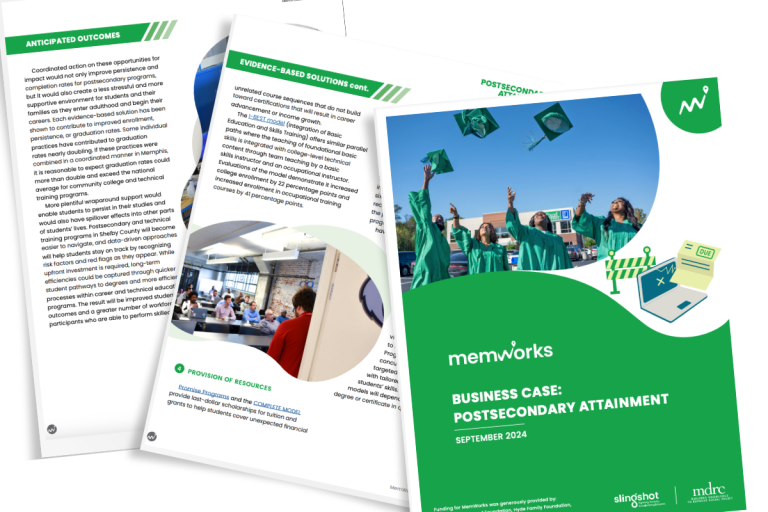Uncoordinated policies and practices can create greater financial vulnerability despite career progression
MemWorks has helped us identify the root causes that are impeding employment pathways for Memphians experiencing poverty. An accurate understanding of these roadblocks is absolutely essential, but without knowing how to effectively overcome these roadblocks, we are still unable to enable pathways to living-wage jobs.
We are excited to share evidence-based interventions that can help our community overcome these roadblocks. We are continuing our series this week on additional roadblocks that we acknowledge pose similarly severe challenges to Memphians. Because these roadblocks are not a core focus of the MemWorks effort, our research is focused and less expansive. We continue to maintain the same research standards across our work. This email introduces evidence-based practices that can help alleviate the challenges of benefits cliffs that Memphians living in poverty face as they navigate earning higher wages with the associated losses in government benefits.
If a single parent of two in Shelby County earns a raise from $10 to $12 per hour, their net resources available actually fall by an estimated $5,000 annually
85% of Tennessee TANF recipients said they have been impacted by the benefits cliff. The largest benefits cliffs are associated with the loss of support for childcare and housing. In Shelby County, the monthly average for a family receiving government support is $401 for nutrition support, $382 for temporary support, and $700 for rent assistance. A $1 to $2 per hour pay increase that exceeds eligibility for these government benefits can leave individuals more vulnerable. Career progression is disincentivized when increases in compensation are less than the value of the lost governmental benefits.

Several evidence-based models can help smooth the benefits cliff and incentivize career progression
Most solutions to the benefits cliff require policy changes at the local and state level, but there are some efforts employers and workforce organizations can undertake to support families who are impacted. Several evidence-based approaches show promise:
- Maine’s Secure Transitions to Economic Prosperity (STEP) policy ensures a smooth transition for families receiving TANF by disregarding earned income for a limited period, which enables a more gradual reduction in benefits as income increases.
- Massachusetts’ Learn to Earn initiative takes proactive steps to mitigate the benefits cliff by providing unemployed and underemployed job seekers with support to pursue in-demand living wage jobs with wages that would supersede the impact of the benefits cliff.
- New Hampshire’s Whole Family Approach to Jobs program brings together stakeholders from state agencies, education institutions, businesses, and the community to integrate support for families transitioning from public assistance to self-sufficiency. The initiative includes developing a web-based Benefits Cliff Calculator to help workers understand how changes in income will impact their benefits.
- The Federal Reserve Bank of Atlanta’s Career Ladder Identifier and Financial Forecaster (CLIFF) helps workers understand the impact of wage increases on their benefits. The tool has a dual purpose of aiding policymakers in designing effective social welfare policies to avoid cliff issues.
- Employer efforts can help smooth the impact of the benefits cliff. Designing compensation structures that intentionally avoid the benefits cliff are one of the most effective ways to support employees. Additional benefits like healthcare, childcare support, and flexible paid time off can help employees absorb the impact of losing government benefits.
There are current efforts underway in Tennessee through Our Chance TN, which is aimed at enhancing economic mobility for families while smoothing their transition from public assistance. Many of these evidence-based approaches would require changes to policy and, in some cases, changes to state benefits programs themselves. Through collaboration across the workforce ecosystem, we can generate sensible, evidence-based solutions to support job seekers as they transition off of government benefits and into living-wage careers.





